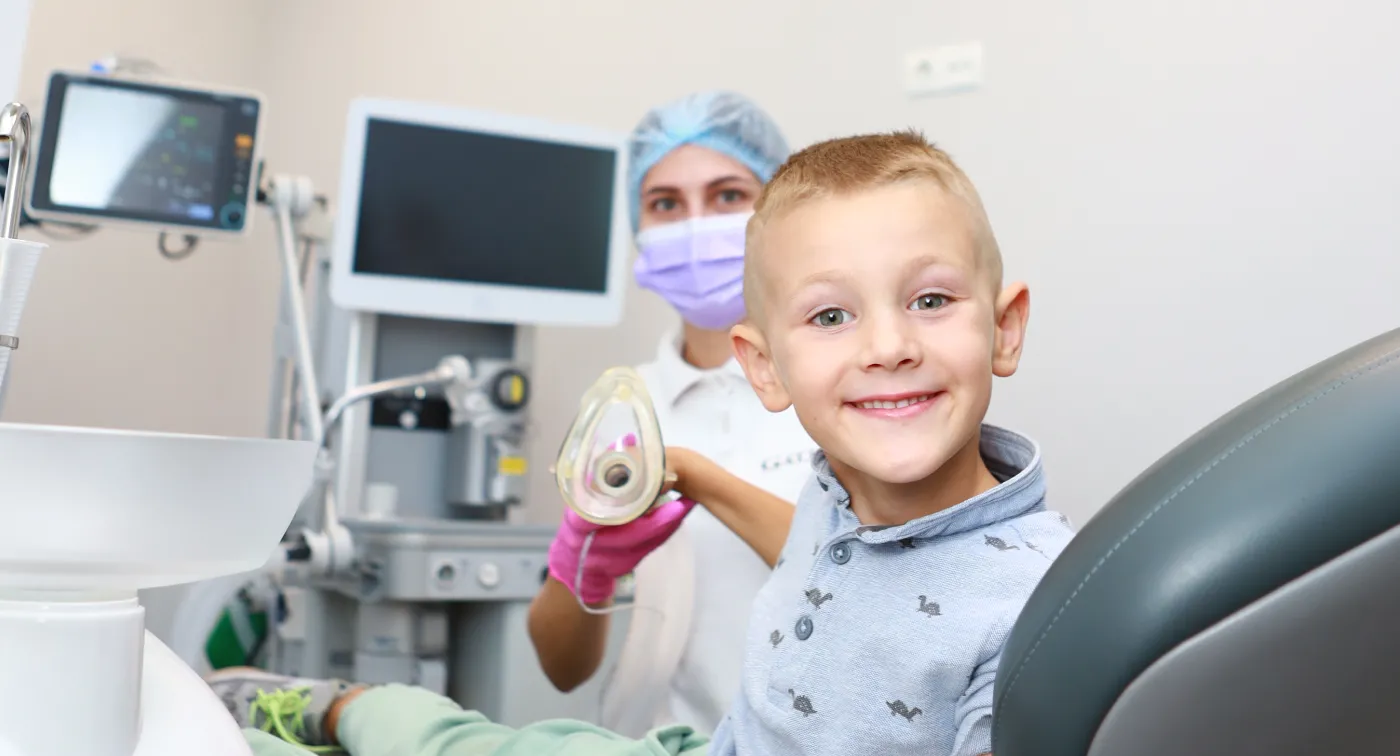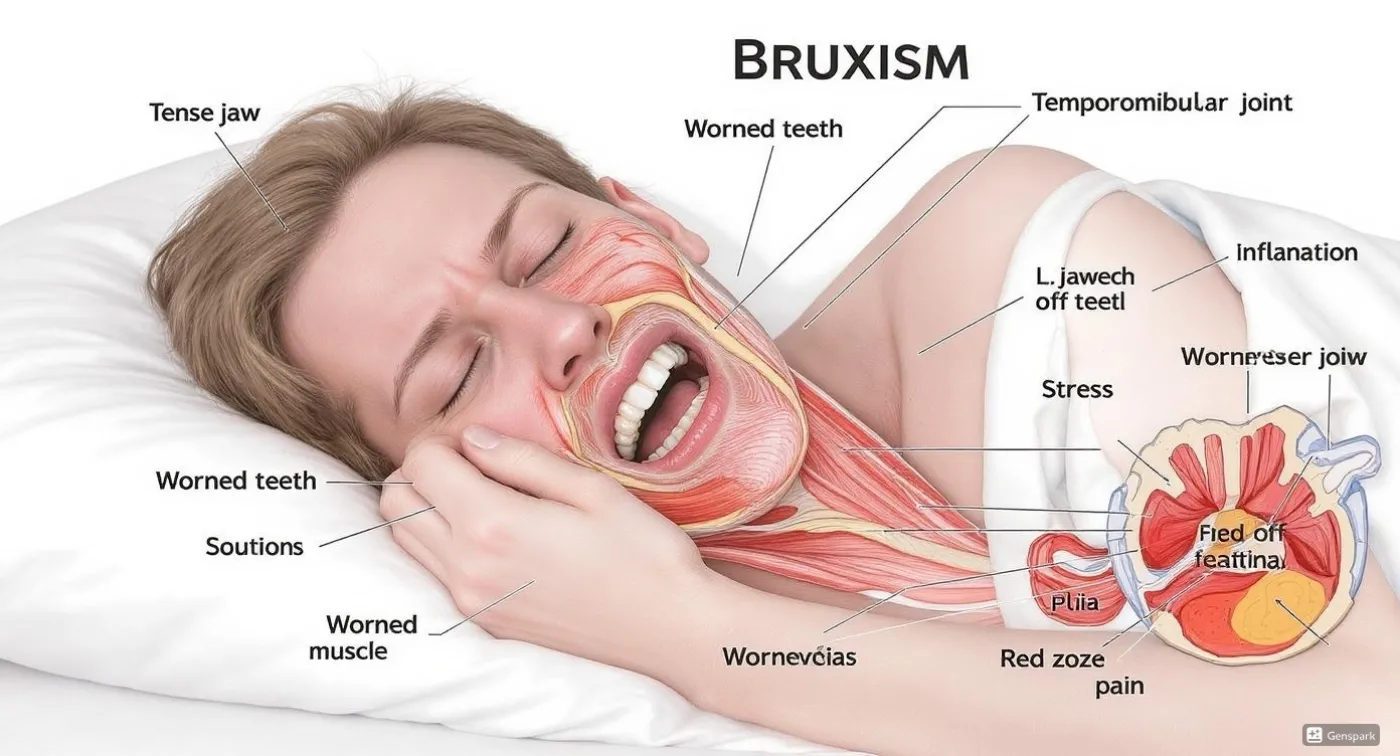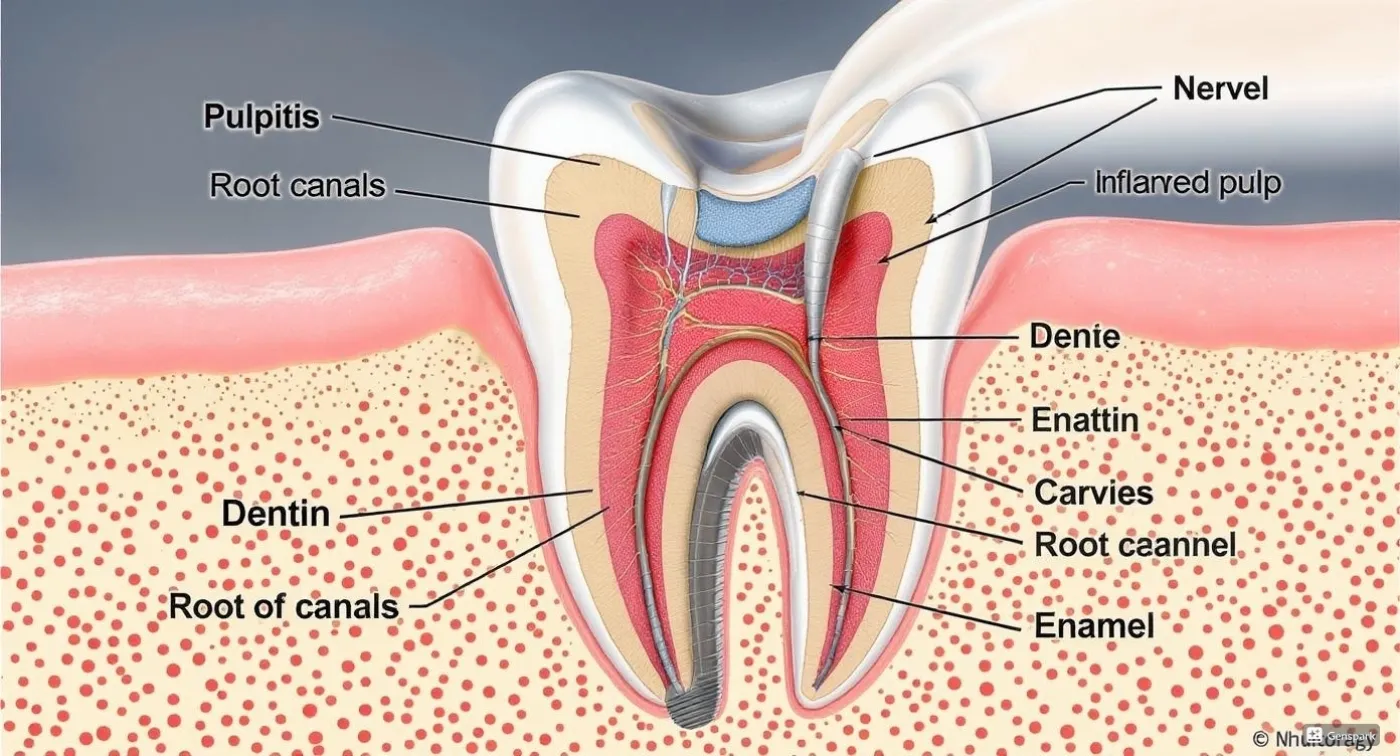Tooth decay in children in Ukraine is an epidemic, affecting 80% by the age of 6. Causes include thin enamel, sugary foods, and weak immunity. Prevention methods: fissure sealing, fluoride treatment, and modern sealants. Diagnostics: CRT tests, dental exam. Treatment: trays, remineralisation. Gallant ensures healthy teeth!

Tooth Decay Prevention in Children: Modern Approaches and Innovative Sealants for Tooth Protection
In Ukraine, the problem of tooth decay in children has reached epidemic proportions. According to the Ministry of Health, various degrees of tooth decay are diagnosed in nearly 80% of children under the age of 6.
Damage to baby teeth is not just a matter of aesthetics or temporary discomfort. Dental problems in childhood increase the risk of oral diseases in adulthood. Fortunately, procedures such as fluoride treatment, fissure sealing, and other preventive measures can effectively stop carious processes before they begin.
The mechanism of tooth decay: what has changed in our understanding
Tooth decay is the destruction of the enamel and the underlying dentin. For a long time, bacteria were considered the sole cause. Today, other contributing factors have also been identified. One of them is the biofilm—a layer of bacteria, microscopic food debris, and enzymes that forms on teeth. Under this layer, lactic and other organic acids are produced, which gradually erode the enamel.
Bacteria can also alter the pH of the oral cavity and the chemical composition of saliva, which normally plays a protective role for the teeth. As a result, the enamel loses essential minerals, becomes softer, and more vulnerable.
Susceptibility to tooth decay can be congenital—passed on from parents or formed during prenatal development.
Specifics of a child’s oral cavity
Children are more prone to developing tooth decay than adults. Several factors contribute to this: thinner enamel compared to permanent teeth, frequent consumption of sweets, and an underdeveloped immune system that is less effective at fighting harmful bacteria in the mouth. All of this is often compounded by poor oral hygiene. Children usually don’t understand the importance of brushing their teeth regularly and often do it incorrectly, which only increases the likelihood of dental problems.
Innovative Fissure Sealants — A Breakthrough in Prevention
A deeper understanding of the complex nature of tooth decay and the unique characteristics of a child’s oral cavity has led to the development of new, highly effective preventive solutions. One of the most promising among them is fissure sealing in children.
Fissures are grooves and pits found on the chewing surfaces of molars and premolars. These areas are particularly prone to trapping food particles and bacteria, which significantly increases the risk of tooth decay. Fissure sealing involves filling these pits with a special protective material. Depending on the technique used, fissure sealing can be invasive or non-invasive. In both cases, sealants act as a physical barrier between the enamel and the biofilm, reducing the risk of tooth decay development.
Classification of Modern Sealants
Contemporary dentistry uses various materials for sealing fissures:
- Fourth-generation resin-based sealants
- Glass ionomer composites with prolonged fluoride release
- Bioactive materials with antimicrobial properties
- Self-healing nanocomposite systems
Mechanism of Action of New-Generation Sealants
Modern sealants provide protection through several mechanisms:
- Tightly seal fissures, forming a physical barrier against acids and bacteria
- Release mineral ions, which gradually integrate into the enamel and strengthen it
- Exhibit antibacterial properties, lasting up to 2–3 years after application
- Enhance the remineralisation of tooth tissues
Advantages of Innovative Formulas
When weighing the pros and cons of fissure sealing in children, the benefits clearly stand out—especially when using next-generation materials. These advanced sealants offer:
- Long-lasting - they can remain effective for up to 10 years
- Microcracks can "heal" themselves over time
- Aesthetic appeal – the materials virtually invisible
- They bond securely to the enamel, resist peeling, and are hypoallergenic
Parents often highlight in their reviews that after fissure sealing, frequent visits to the dentist become unnecessary, making the procedure both practical and reassuring.
Individual Approach: From General Recommendations to Targeted Prevention
Modern prevention of tooth decay in children is based on a personalised approach - risks are assessed individually, and care programs are developed accordingly.
The quality of risk assessment has greatly improved thanks to innovative technologies. Today, dentists use:
- Diagnostic tests like CRT and Dentocult, which measure the amount of bacteria causing tooth decay in saliva;
- Genetic analysis to determine innate susceptibility to tooth decay;
- Analysis of saliva composition and pH to evaluate the level of natural protective mechanisms;
- Digital systems that allow prediction of potential risks based on data from other examinations.
Based on the results and the child’s risk profile, hygiene products are individually selected, dietary recommendations are given, schedules for fluoride treatments and preventive visits are set, and plans for routine check-ups, tartar removal, and other procedures are established.
Revolution in Home Care: Modern Products and Technologies
Preventing tooth decay in children is not only about procedures in the dental office but also about proper home care.
Modern hygiene products for home use allow not only cleaning teeth but also strengthening enamel and maintaining a healthy oral microbiome. These include:
- Toothpastes with nano-hydroxyapatite;
- Probiotic complexes to support the balance of the oral microbiome;
- Smart toothbrushes with pressure sensors and other features to improve brushing quality;
- Remineralising gels to strengthen enamel.
For more effective prevention of tooth decay, it is recommended to add foods rich in calcium and fluoride to the child’s diet, minimise sugar and acidic drink consumption (which increase enamel erosion risk), and consume prebiotics that support a healthy oral microbiome.
Digital Technologies in Preventing Childhood Tooth Decay
Modern digital technologies also play an important role in preventing tooth decay in children. Dental clinics use methods such as laser fluorescence diagnostics (DIAGNOcam) and digital radiography with minimal radiation exposure. For risk analysis and prediction, AI-based technologies are employed. Portable devices for measuring acidity in the oral cavity at home have appeared, as well as mobile applications that encourage children to practice regular oral hygiene in a playful manner. Thanks to telemedicine, it is now possible to consult with a dentist remotely, reducing unnecessary stress for the child.
Prevention at Different Age Stages: From Infant to Teenager
Prevention of tooth decay in children has its own characteristics depending on the age.
Early Childhood (0-3 years)
It all starts with prenatal prevention. The future child’s dental health largely depends on the mother’s diet and oral condition during pregnancy. When the first teeth begin to erupt, special wipes are used for cleaning, followed by soft brushes and children’s toothpaste. To prevent bottle tooth decay, it is important to wean the child from feeding through a bottle at the right time.
Preschool Age (3-6 years)
During this period, new foods appear in the child’s diet, including those harmful to tooth enamel. It becomes especially important not only to teach the child to brush regularly but also to monitor proper brushing technique. At this stage, the foundations of dental culture and home tooth decay prevention habits are formed.
School Age (6-12 years)
This is the time when both baby and permanent teeth are present simultaneously in the oral cavity, which increases the risk of decay in eruption zones. Regular prevention and dental check-ups at this age are extremely important. Starting from age 6, fissure sealing of teeth can be used as a preventive measure against tooth decay.
Parental Literacy – The Key to Successful Prevention
One of the conditions for effective prevention of tooth decay in a child is the awareness of their parents. Nowadays, various formats of education are available to improve dental literacy among adults: interactive educational programs, online courses on pediatric dentistry, and practical workshops in clinics. Dentists also publish a lot of useful information for parents on social media.
To ensure that the knowledge gained by parents is beneficial, it is important to apply it in daily home practice: to create family traditions and rituals, and to teach young children about hygiene through personal example.
Development Horizons: What Awaits Us Soon
The field of pediatric dentistry is rapidly evolving. Considering the fast development of genetic engineering, it is quite possible that soon it will be possible to correct hereditary predisposition to tooth decay. Bioengineering is working on the possibility of displacing pathogenic microflora from the oral cavity. Nanorobots capable of targeted drug delivery to affected areas are already being tested in laboratories, and tissue engineering is opening the way to enamel regeneration without drills and fillings.
Action Plan for Parents: Step-by-Step Prevention Program
The future of tooth decay prevention looks very promising. However, parents can already do a lot today to protect their child from dental problems. Moreover, the effectiveness of modern technologies significantly increases when combined with a systematic home approach, which requires:
- Following age-appropriate schedules for dental visits. The first visit to the dentist should be at 6-12 months of age, followed by preventive check-ups every six months. Professional teeth cleaning for children is recommended approximately every quarter.
- Adhering to a home care routine: brushing teeth twice a day, rinsing the oral cavity after every meal, limiting the amount of sweets and acidic foods in the diet.
- Choosing hygiene products according to age and individual needs, following the dentist’s recommendations: soft toothbrushes, toothpaste with safe fluoride concentrations.
- In case of white spots or dark spots, unpleasant breath, complaints of sensitivity or pain, tooth discoloration, injuries, or chips, it is necessary to immediately consult a dentist.
- Psychologically preparing the child before a dental visit, without intimidation.
Summary: An Investment in Your Child’s Future Health
Cavity prevention in children is not just about brushing teeth and occasional dental check-ups. It is a comprehensive approach that combines innovative medical technologies, parental care, and educational programs. An early start, individualised care, consistency, and modern methods ensure high prevention effectiveness and offer a real chance to minimise the risk of cavities in adulthood. And Gallant Dental Clinic is here to help.
Here, young patients receive not only high-quality treatment but also a complete preventive care programme tailored to their individual needs. Our dental clinics in Horodyshche and Korsun are modern facilities where experienced dentists perform professional enamel cleaning and seal the fissures of primary and permanent teeth in children of different ages.
Contact Gallant Dental Clinic today and give your child not just a healthy smile, but a confident, cavity-free future.
Request a call
We will contact you to schedule a convenient time for your consultation and connect you with the right specialist
More articles
We have gathered all the most interesting posts from our specialist doctors in our blog just for you
Dental Treatment During Pregnancy: Myths and Facts

Bruxism (Teeth Grinding) and How to Get Rid of It Forever


Request a call
We’ll get back to you shortly!

Leave a Review
Your feedback means a lot to us!



